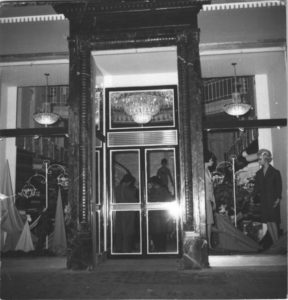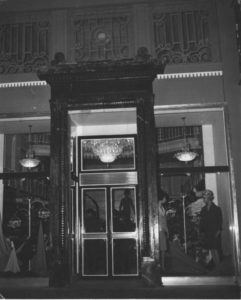Textile shop
City
Migration Period
City Narratives
Tag
Category
Full Description
The photographs show the textile shop belonging to the Ichtiaroglou family at 6 Ermou Street in 1965. The Ichtiaroglou family were Asia Minor refugees who had lived in the centre of Thessaloniki ever since their arrival in the city. In 1938, the father of Alexandros Ichtiaroglou, the present owner of the company, started working at his uncle’s textile shop at 11 Ermou Street. In 1963, the same shop where he used to work as an employee started operating under the name ‘Ichtiaroglou and Pekos’. A few years later, Alexandros Ichtiaroglou, the present owner, also started working there.
When discussing his work, Alexandros Ichtiaroglou says, ‘My father didn’t want me to go into textiles. He wanted me to become an engineer. Things were hard back then, you know, there was great poverty. Besides, we were refugees. My father believed I would make more money doing something else, but I liked commerce. So, when I was discharged from the army in 1976, I joined the company. The shop has been in our family for three generations, first it was my father’s, then mine, and now my children’s. If you count my uncle, that’s four generations. Our shop sold textiles wholesale to other textile shops throughout Greece. I liked visiting the textile factories and watching the production line. That was how I got answers to my questions about textiles and the materials they’re made of. During the manufacturing boom, we also started selling retail to small manufacturers. I remember the time when scores of manufacturing units were cropping up and we could have 10 to 15 couples a day coming to our shop and saying, “Hi, we want to open a manufacturing business and we’re here to look at textiles”. Those people were not particularly educated and many of them didn’t know the job, but they were unemployed at the time and manufacturing gave them jobs’.
According to Labrianidis, the time period described above was characterised in Thessaloniki by a population increase, a rise in the commercial traffic through the city port, as well as the facilitation of transport to and from Thessaloniki both through the road network and the airlines connecting the city with various domestic and international destinations. In addition, based on the data from the 1984 census, Thessaloniki was boasting a great concentration of both large-scale and small-scale manufacturing units compared to the rest of the country, especially in the sectors of textiles, clothing, tobacco, and footwear. By utilising the newly-developed transportation network from and through Thessaloniki, the sectors of clothing, footwear, and textiles managed to achieve dynamic growth.
Bibliography
Ntina Vaiou and Kostis Chatzimichalis, With the sewing machine in the kitchen and the Poles in the fields. Cities, peripheries and informal labour, Exantas (2nd edition), Athens 1997.
Lois Labrianidis, ‘The city’s development since the 1980s: why opportunities were not effectively utilised’, in Kafkalas, G., Labrianidis, L. and N. Papamichos (eds.) Cities on the Verge: Thessaloniki in a Process of Change, Kritiki, Thessaloniki 2008.


